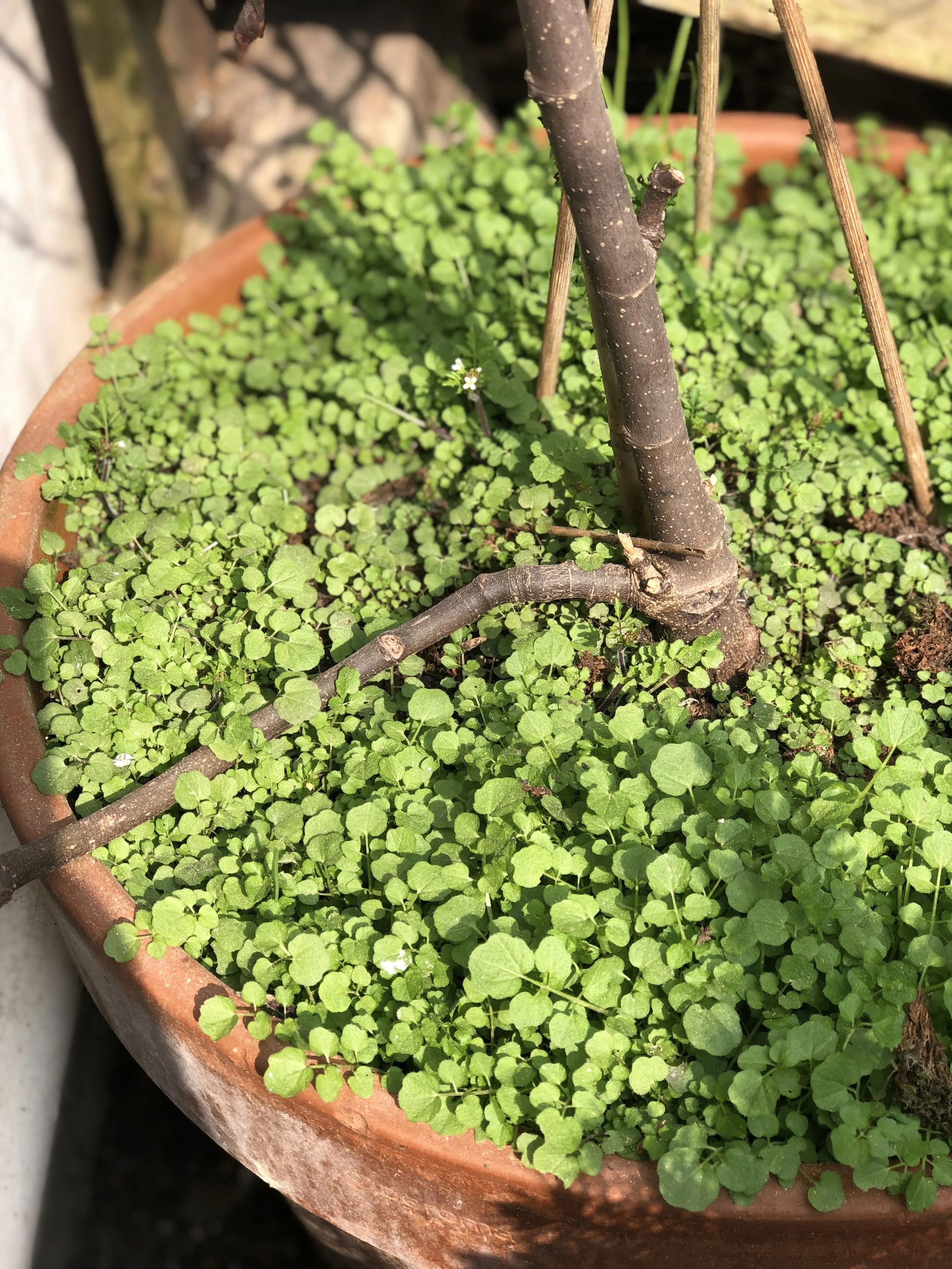Better the Weeds You Know
The term "weed" has no botanical significance, because a plant that is considered a weed in one situation is not a weed when growing in another. Some weeds are delicious - chickweed, for instance, is a lovely addition to a pakora, hairy bittercress adds pepperiness to salads and young nettles leaves are tasty whizzed into soup. Many are edible and all are very important for biodiversity and providing habitat for beneficial insects. Over the years I have become mildly obsessed; I can't walk into a garden without my eye being drawn to a dastardly dandelion or to a patch of bolshie bindweed. Identifying the problem plants in their early stages will help stop the problem from growing. It is easy to reach for the Roundup, but the long-lasting harm you’re doing to the rest of the ecosystem outweighs the benefit of getting rid of a few weeds. The organic approach takes a bit more attention in the short term, but in the long run it benefits you and the environment in which you grow.
There are two types of veg plot weeds: annual and perennial. The perennial weeds are the most troublesome to the gardener, with deep roots and a pernicious growth habitat they can create a lot of work all year. It is important when removing perennial weeds that you get all of the root, as many can self-propagate from the smallest bit.
Also be aware that when composting pernicious weeds, it is wise to burn the really persistent ones. Ground elder, mare’s-tail, bindweed, perennial nettle, knotweed and couch grass are the worst culprits. It is usually safe to put annual weeds on the compost, as they don’t readily propagate from the root. Meadow grass can be one of the most troublesome weeds for the kitchen gardener; keeping grass paths and borders mown and weeded will stop grass seed spreading. Annual weeds such as redshank, fat hen, mayweed, groundsel and chickweed are easier to control but need to be kept on top of. It’s important to learn the difference.
The seemingly endless task of weeding and hoeing will become less of a problem as the years go on. By reducing weeds in the garden you reduce the weed seed bank, therefore over time less weeds will appear and the job will become easier. Make sure you regularly hoe on dry days, letting the sun kill the weeds as they dry on the surface. Be aware when spacing plants that you have enough room to hoe in between rows. Thoroughly mark direct sown rows so you know exactly where your newly emerging seedlings are. This will help you avoid accidents when hoeing.
Allowing weeds to run to seed will obviously perpetuate the problem. If you are sowing green manure, leaving them in the ground too long in the spring means that they could set seed and produce weeds, so cut down and incorporate before they reach reproductive maturity.
If you are starting a new plot or reclaiming an old piece of ground, removing the inevitable blanket of vegetation will be your first task. Once cleared and roots and stones removed, laying old carpet or cardboard on bare soil will control any rogue weeds until you are ready for cultivation and planting. Excluding the sunlight will make the weed roots weaker as they struggle to photosynthesise. I often use a reusable woven nylon fabric mulch to look after new areas of development. This allows water to penetrate but excludes light. This means I can ground cover plants like squash and courgettes through the fabric whilst keeping weeds at bay - a good trick if you have a large garden and don’t have time to work all the soil in one season. When you lift the mulch you will have a nice patch of bare soil to work with. Just be aware that as soon as you expose the soil to sunlight the weeds will soon be back.
Avoid rotovating weedy beds at all costs, as you run the risk of chopping up the roots and spreading the weeds further. If you want to rotovate, remove all the weeds by hand first. It takes longer to begin with, but it is definitely worth the effort. Burning weeds with a blow torch or weed burner can work too. This works well for newly emerging weeds. Regular burning can help weaken weed roots over time and can be very effective with stubborn weeds like couch grass.
All that being said, sometimes it pays to leave the unknown seedling to mature. It might be a field poppy blown in on the wind, or some borage that has jumped the neighbours fence. Without any effort at all you may get a beautiful surprise addition to your garden.
This post originally appeared as an article in the May 2019 edition of the Bridport Times , which can be read in its entirety online at www.bridporttimes.co.uk.
